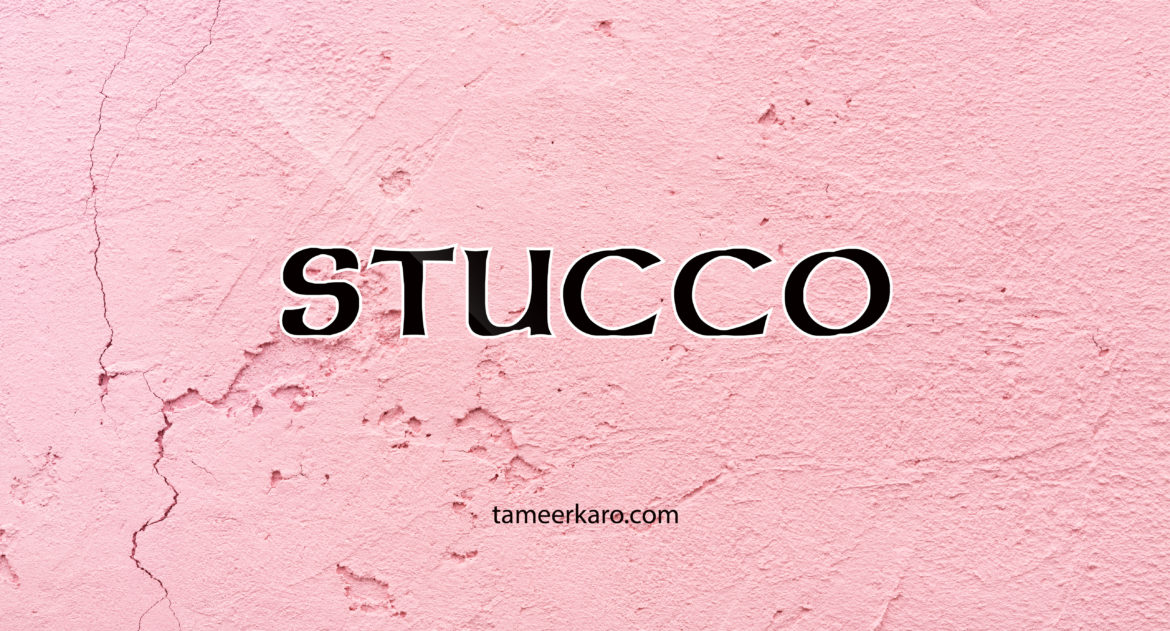For decades, stucco has been used on the building’s interior or exterior for styling and protection. It is a mixture of sand, cement, concrete, crush, a binder, water, and sometimes lime. It is similar to the plaster as the composition is quite similar. But the term stucco is usually used to provide a beautiful thick finishing to the residential and commercial buildings. People in Pakistan commonly use it for their house façade with different textures.
Commonly, the composition of it is cement, sand, and water. But with time, the composition also includes additives, pigments, acrylics, glass fibers, and different colors for structural stability and colorful textures. Its strength usually depends on the material it is applied on. Whether it is metal, metal lath, wood, concrete blocks, or clay bricks, the different types of stucco’s stability and strength depend on the surface it can stand on.
Types of Stucco
The types of stucco is differentiated due to the composition and the usage. Broadly it has been divided into two types:
- Traditional Stucco: In the past, stucco was used only on the building’s exterior. It is the composition of cement, sand, lime, and water. It can be cementitious, or you can add colors for excellent finishing. This type is cheaper than modern synthetic stucco. But it can produce cracks during heavy rain or movement in the house’s structure.
- Modern Stucco: Nowadays, there are too many brands available in the market of modern stucco. This type uses Portland cement with lime in its composition. Acrylics and resins are also part of modern stucco for fine and stable finishing. Different textures are available to choose from for your house or commercial buildings according to your choice. You use 1-2, or 3 coats of this synthetics stucco for better results, which will cost you a little higher than the traditional one.
Different Types of Stucco Finishes
There are different types available in the market you can choose from. Few of the important ones are as follows:
- Sand Finish: A sand finish is a type of stucco finish which provides a more textured and texturized surface, rather than being smooth. It is also called float stucco finish. The sand finish is one of the oldest forms of stucco finishing. In some cases, you can still find its original implementation in early 20th century homes. While this type of finish is usually associated with older homes, it is not uncommon for newer ones to also have this type of finish. There are various ways through which a sand finish can be applied. The most common one is using a trowel, which involves brushing and spreading the stucco onto a wall panel in an even manner. Another way to apply this type of stucco finish is through taping. This entails mixing sand into the stucco while it’s still wet before applying the mass onto a wall with a tool similar to a roller. This ensures that your wall has a more homogenous textured appearance compared to taped look-a-like (which looks like small ripples) finishes.
- Cat Face Finish: The cat face finish is a specific style of faux painting that has gained popularity over the years. It is also referred to as a California finish due to its usage in its namesake state. This finishing technique is great for anyone looking for an older look with a more natural feel to it.
- Lace Finish: Lace finish is also one of the popularly used stucco finish due to it hides imperfections in the substrate. It is also known as lace and skip or skip and trowel finish. In the lace finish type of finish, the trowel is swept in a vertical/upward motion leaving behind a textured pattern that’s created by overlapping lines and streaks of mortar.
- Smooth Finish: The smooth stucco finish has a clean and simply elegant appearance that is achieved by using a hard polished cement plaster. Smooth finish techniques take more time than a regular finish to achieve but can be very rewarding in the end result, giving the plaster an almost glass like appearance.
- Santa Barbara Finish: The Santa Barbara Mission finish is used for the trim and eaves on homes and buildings. The finish was introduced in the 1950s and was historically used on Spanish style buildings. The main look achieved with this type of stucco is that of irregular, imperfect stucco that ranges from hairline cracks to small mottling. This classic finish can be applied using two applications of thin-set mortar, which are then slapped on after each other with a slight overlap.
Conclusion
For the interior designing or the finishing of your home and office, contact Tameerkaro. You can get free estimate for your complete project for free at info@tameerkaro.com or directly reach us at 0300-0556666.

